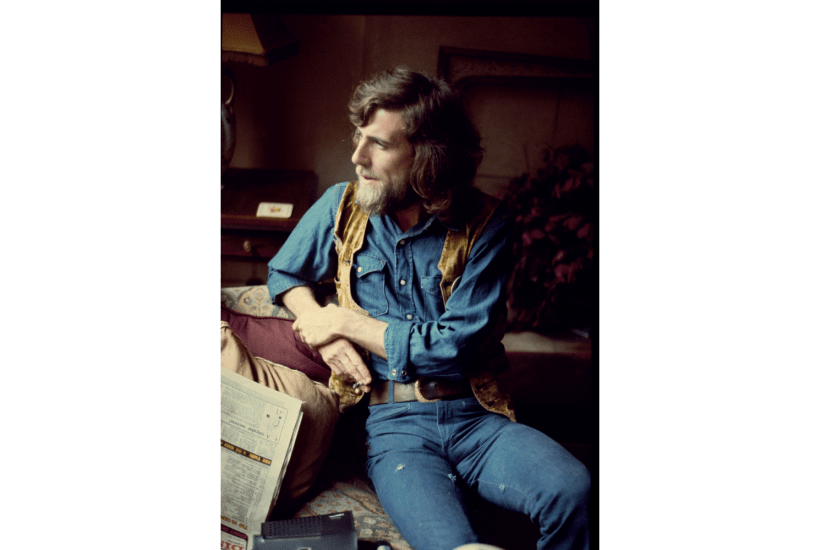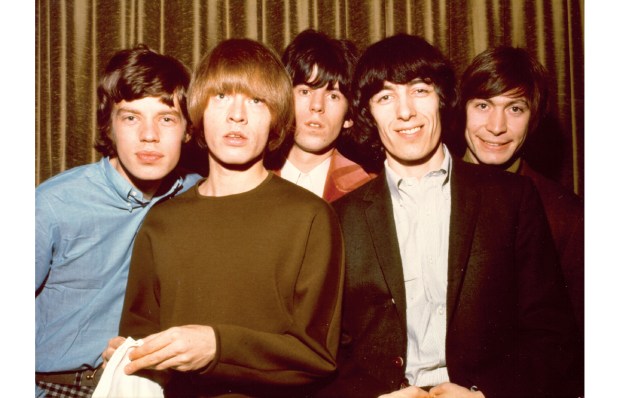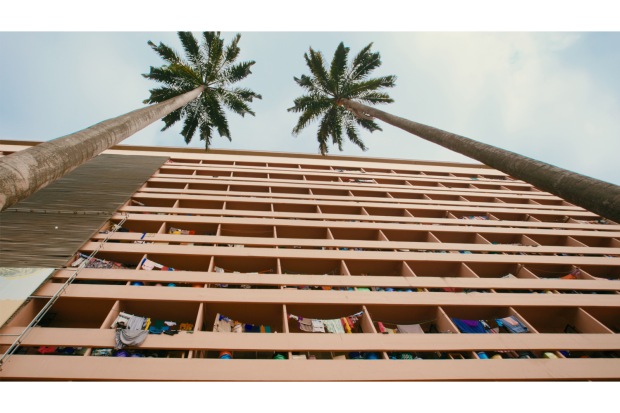Graham Nash always seemed like the reasonable, peace-making one among his famously fractious compadres, David Crosby, Stephen Stills and Neil Young. But he didn’t get to where he is today by being plagued with doubt or false modesty. Even talking remotely over a Zoom connection, he still radiates a kind of unshakeable certainty.
‘I just trust that the universe loves me enough to support what I’m doing,’ he declares. ‘I don’t seek my life, my life happens to me and I’m perfectly content to let it. Look what I’ve done in my life… Pretty nice!’
At 81, Nash is, incredibly, a pre-baby boomer, but mentally he seems about three decades younger. He’s here for a tour that kicked off in Basingstoke and will take him from London to Glasgow to Nottingham to Gateshead, not forgetting his home town of Manchester – though he’s careful to specify that ‘I’m Salfordian, all my life. I think I’ve still retained a little of my accent, y’know.’
For this tour, Nash is keeping it lean and mean. On stage it’ll just be him, plus his regular guitarist Shane Fontayne and keyboardist Todd Caldwell. But the concerts will find him roving over 60 years of music-making, from his early days with the Hollies (the so-called Mancunian Beatles) through to the Crosby, Stills, Nash and Young era and his solo work, not least his new album Now, released in May this year.
Now was his first batch of new songs since 2016’s This Path Tonight. In typically Nashian style it’s a mix of the intimate and romantic – including an infuriatingly hummable love song ‘It Feels Like Home’ – with tirades against the state of politics and the planet.
‘Many years ago [Nina Simone] said, “Every artist needs to talk about the times in which they live”… and I try and talk about my life as it is now.’
The California that Nash moved to in 1968 now seems like a shimmering utopian mirage. ‘Laurel Canyon in those days was full of sunshine, it was full of music. Me and Stephen and David would go to people’s houses with one or two acoustic guitars, and play most of the first Crosby, Stills and Nash album and blow them away,’ he remembers. ‘There were lots of beautiful women. There were drugs, of course. I was never a drinker. I smoked marijuana; I snorted cocaine occasionally. But Laurel Canyon in the late 1960s and early 1970s was a paradise.’
The creation of Crosby, Stills and Nash was entwined with Nash’s love affair with Joni Mitchell, an incandescent romance that began when he was touring with the Hollies in 1968. He flew back to LA to visit her and there, at the house of one of the Monkees, Peter Tork, he met Stills and Crosby while they were working on Stills’s song ‘You Don’t Have To Cry’. After listening to it a couple of times, Nash joined in with his own top harmony. In that instant, the scintillating vocal sound of Crosby, Stills and Nash was born.
‘Joni was the only witness to that sound and it was created in less than a minute,’ says Nash. ‘It changed our lives.’
In 1968 Nash was already a major pop star with the Hollies, with whom he’d recorded 17 top 20 hits, but he had no hesitation in leaving it all behind him and relocating to the lotus land of late-1960s California.
‘People thought I was insane,’ he recalls. He parodies the primordial Manc accent that he used to speak before he got Americanised: ‘“Leavin’ the Hollies, all that money and all that fame and all them women? Are you crazy?” But I had heard David and Stephen and me sing together, and I desperately wanted that sound. I realised I would have to go back to England and leave the Hollies and leave my equipment and leave my money and just come to America and follow that sound. And I did.’
It takes a certain type of personality to make such a drastic, life-changing leap, but Nash called it right and it paid off spectacularly. Nearly half a century later, he did it again. This was after he met artist and photographer Amy Grantham in 2014 backstage at a Crosby, Stills and Nash concert in New York. Instantly smitten, Nash left his wife, actress Susan Sennett who he’d married in 1977, and moved to New York to be with Grantham who’s almost 40 years his junior. They married in 2019 and live in an apartment on Second Avenue.
This time there was more collateral damage. The fact that Sennett died of cancer in 2020 applied a gut-wrenching twist to the story. In a Guardian interview last year, Nash described how his traumatic departure had caused his three adult children to disown him and said that he didn’t foresee a reconciliation. But now he seems more optimistic. ‘I think time is a wonderful healer,’ he says. ‘It’s the only currency we have. Even Zuckerberg and Bezos can’t buy a second of time. So, yeah, time will heal all, I’m sure.’
Meanwhile, he’s still processing Crosby’s death, which occurred in January. It was hardly unforeseen, given Crosby’s hair-raising history of near-death drug experiences, jail time, heart surgery and a liver transplant, but it was made extra painful for Nash by the gulf that had opened between them in the last few years. Crosby apparently took umbrage at what he deemed to be ‘inaccuracies’ and ‘misinformation’ in Nash’s 2013 autobiography Wild Tales.
‘It was insanely sad for me of course. He was my best friend for many years,’ he reflects. ‘But I only choose to remember the good times that we had. The good music that we made. Because the other side of David was awful. He could turn a room into a glorious place of sunshine and good feeling, and two seconds later he could destroy that room with a sentence. But we were getting together towards the end of his life. I’d set up a date when we could FaceTime. I waited and waited for the call and it never came, and then he was gone.’ It’s been a long time coming, it’s going to be a long time gone, as Crosby sang in 1969. ‘It’s the way life is, y’know.’
Got something to add? Join the discussion and comment below.
Get 10 issues for just $10
Subscribe to The Spectator Australia today for the next 10 magazine issues, plus full online access, for just $10.
You might disagree with half of it, but you’ll enjoy reading all of it. Try your first month for free, then just $2 a week for the remainder of your first year.














Comments
Don't miss out
Join the conversation with other Spectator Australia readers. Subscribe to leave a comment.
SUBSCRIBEAlready a subscriber? Log in